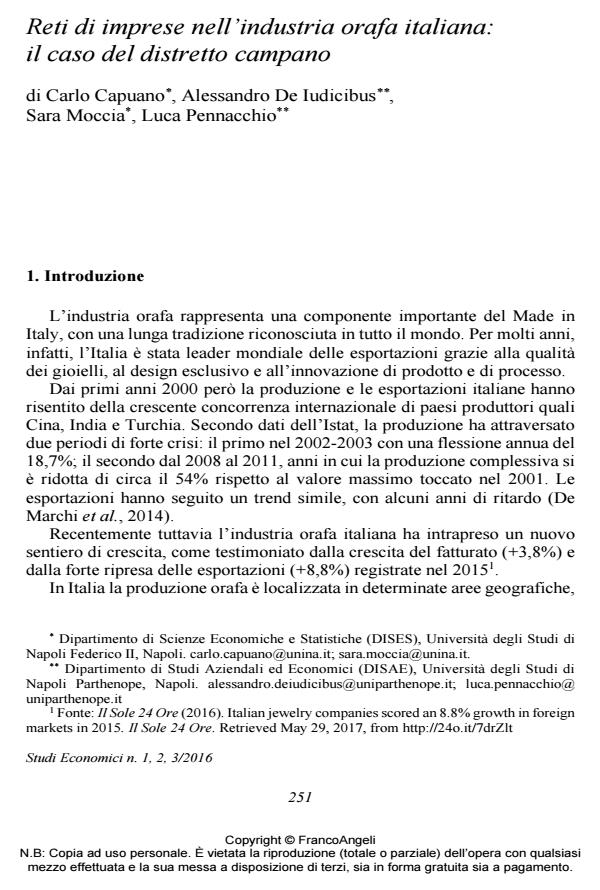Reti di imprese nell’industria orafa italiana: il caso del distretto campano
Titolo Rivista STUDI ECONOMICI
Autori/Curatori Carlo Capuano, Alessandro De Iudicibus, Sara Moccia, Luca Pennacchio
Anno di pubblicazione 2017 Fascicolo 2016/118-119-120
Lingua Italiano Numero pagine 20 P. 251-270 Dimensione file 237 KB
DOI 10.3280/STE2016-118015
Il DOI è il codice a barre della proprietà intellettuale: per saperne di più
clicca qui
Qui sotto puoi vedere in anteprima la prima pagina di questo articolo.
Se questo articolo ti interessa, lo puoi acquistare (e scaricare in formato pdf) seguendo le facili indicazioni per acquistare il download credit. Acquista Download Credits per scaricare questo Articolo in formato PDF

FrancoAngeli è membro della Publishers International Linking Association, Inc (PILA)associazione indipendente e non profit per facilitare (attraverso i servizi tecnologici implementati da CrossRef.org) l’accesso degli studiosi ai contenuti digitali nelle pubblicazioni professionali e scientifiche
The jewelry industry has a long tradition and a relevant role in the Italian economy. The sector is organised according to the productive arrangement of the industrial district. As for the jewelry district in Campania, the present work pursues the twofold objective of identifying the factors inducing enterprises’affiliation to the Tarì, the principal consortium of the district, and the consequent benefits. The empirical analysis documents that enterprises affiliated to the Tarì are larger and their costs have a greater incidence on the total level of production compared to the other enterprises. The principal benefit of participation is the reduction of the production costs, particularly of the costs for the services. However, there are no benefits in terms of revenue growth. Some implications for regional policy makers are discussed in the conclusions.
Parole chiave:Jewelry, industrial districts, clusters of firms, regional economy
Jel codes:L14, L23, L25, L52, O20
- Territorial distribution of economic activities and resilience in Vicenza’s jewelry industry David Celetti, in R-Economy /2022 pp.384
DOI: 10.15826/recon.2022.8.4.029
Carlo Capuano, Alessandro De Iudicibus, Sara Moccia, Luca Pennacchio, Reti di imprese nell’industria orafa italiana: il caso del distretto campano in "STUDI ECONOMICI " 118-119-120/2016, pp 251-270, DOI: 10.3280/STE2016-118015